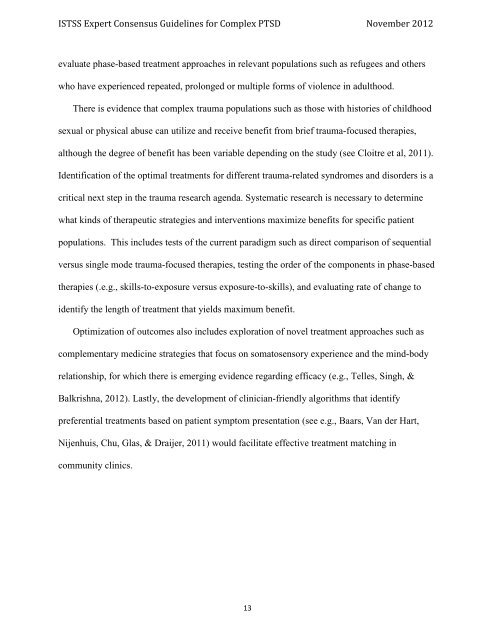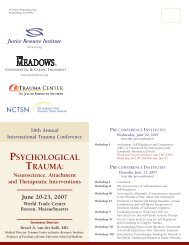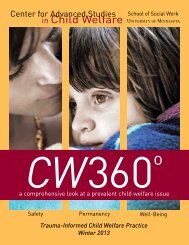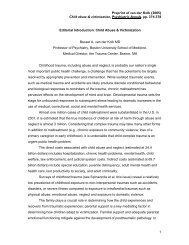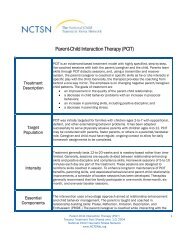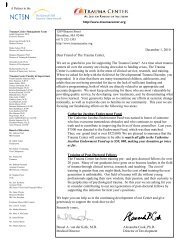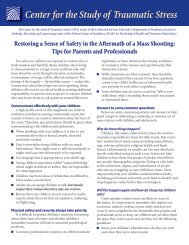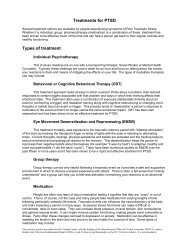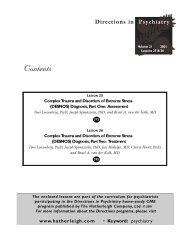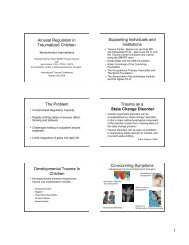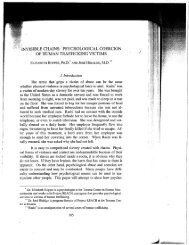ISTSS Expert Consensus Treatment Guidelines for Complex PTSD
ISTSS Expert Consensus Treatment Guidelines for Complex PTSD
ISTSS Expert Consensus Treatment Guidelines for Complex PTSD
Create successful ePaper yourself
Turn your PDF publications into a flip-book with our unique Google optimized e-Paper software.
<strong>ISTSS</strong> <strong>Expert</strong> <strong>Consensus</strong> <strong>Guidelines</strong> <strong>for</strong> <strong>Complex</strong> <strong>PTSD</strong> November 2012<br />
evaluate phase-based treatment approaches in relevant populations such as refugees and others<br />
who have experienced repeated, prolonged or multiple <strong>for</strong>ms of violence in adulthood.<br />
There is evidence that complex trauma populations such as those with histories of childhood<br />
sexual or physical abuse can utilize and receive benefit from brief trauma-focused therapies,<br />
although the degree of benefit has been variable depending on the study (see Cloitre et al, 2011).<br />
Identification of the optimal treatments <strong>for</strong> different trauma-related syndromes and disorders is a<br />
critical next step in the trauma research agenda. Systematic research is necessary to determine<br />
what kinds of therapeutic strategies and interventions maximize benefits <strong>for</strong> specific patient<br />
populations. This includes tests of the current paradigm such as direct comparison of sequential<br />
versus single mode trauma-focused therapies, testing the order of the components in phase-based<br />
therapies (.e.g., skills-to-exposure versus exposure-to-skills), and evaluating rate of change to<br />
identify the length of treatment that yields maximum benefit.<br />
Optimization of outcomes also includes exploration of novel treatment approaches such as<br />
complementary medicine strategies that focus on somatosensory experience and the mind-body<br />
relationship, <strong>for</strong> which there is emerging evidence regarding efficacy (e.g., Telles, Singh, &<br />
Balkrishna, 2012). Lastly, the development of clinician-friendly algorithms that identify<br />
preferential treatments based on patient symptom presentation (see e.g., Baars, Van der Hart,<br />
Nijenhuis, Chu, Glas, & Draijer, 2011) would facilitate effective treatment matching in<br />
community clinics.<br />
13


